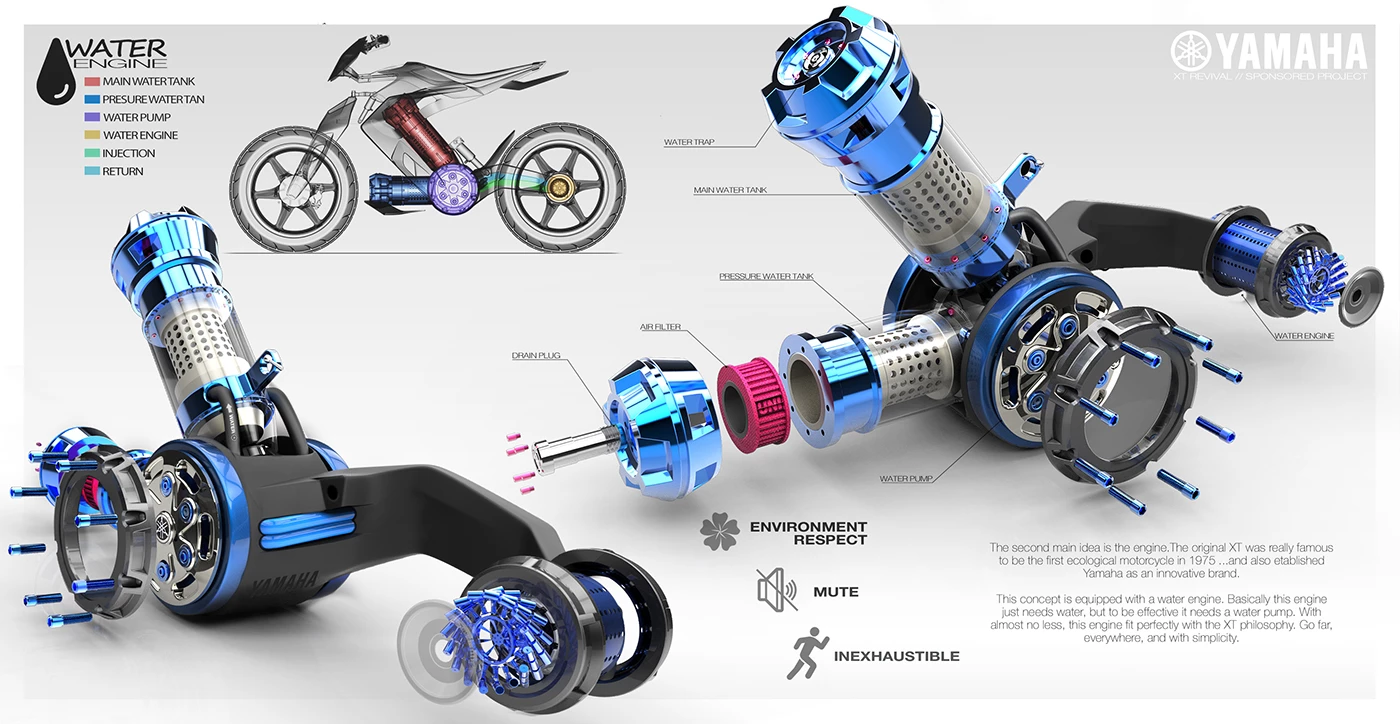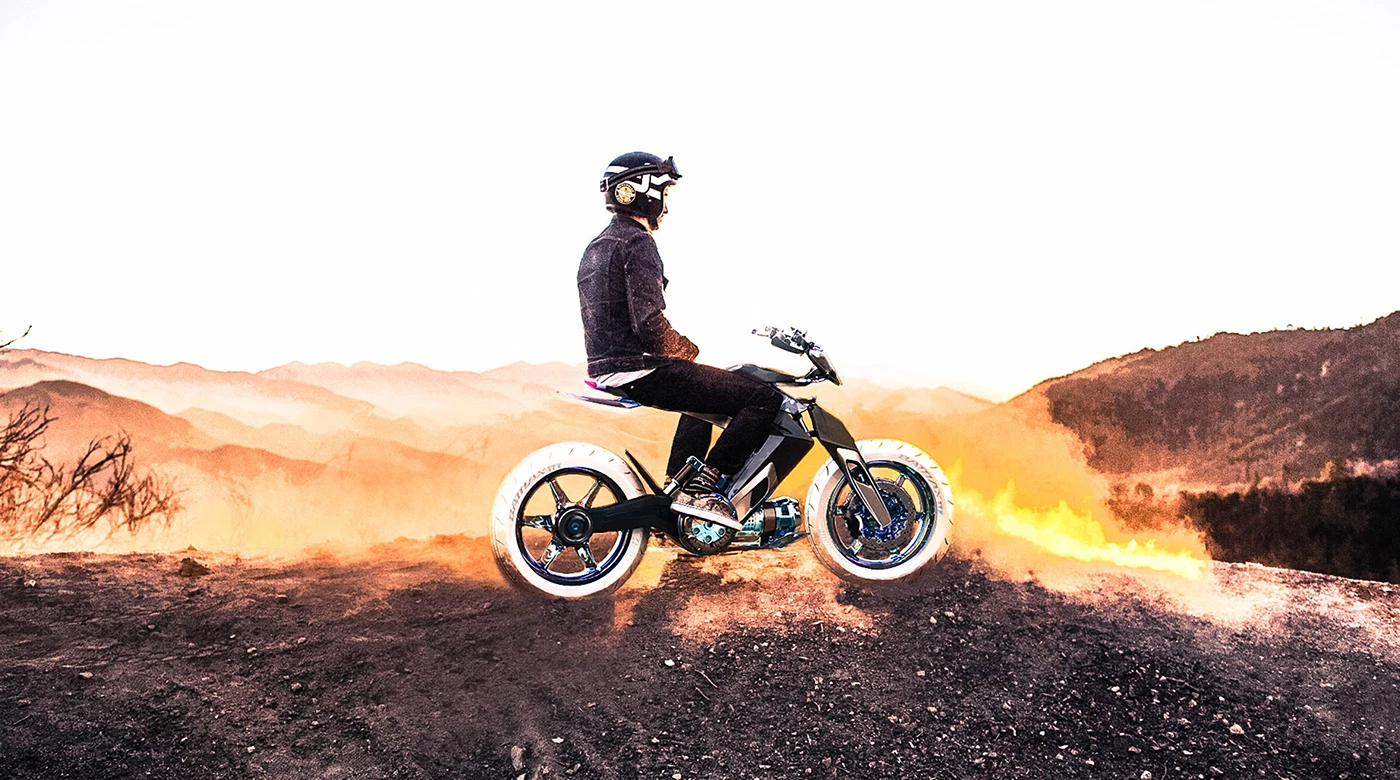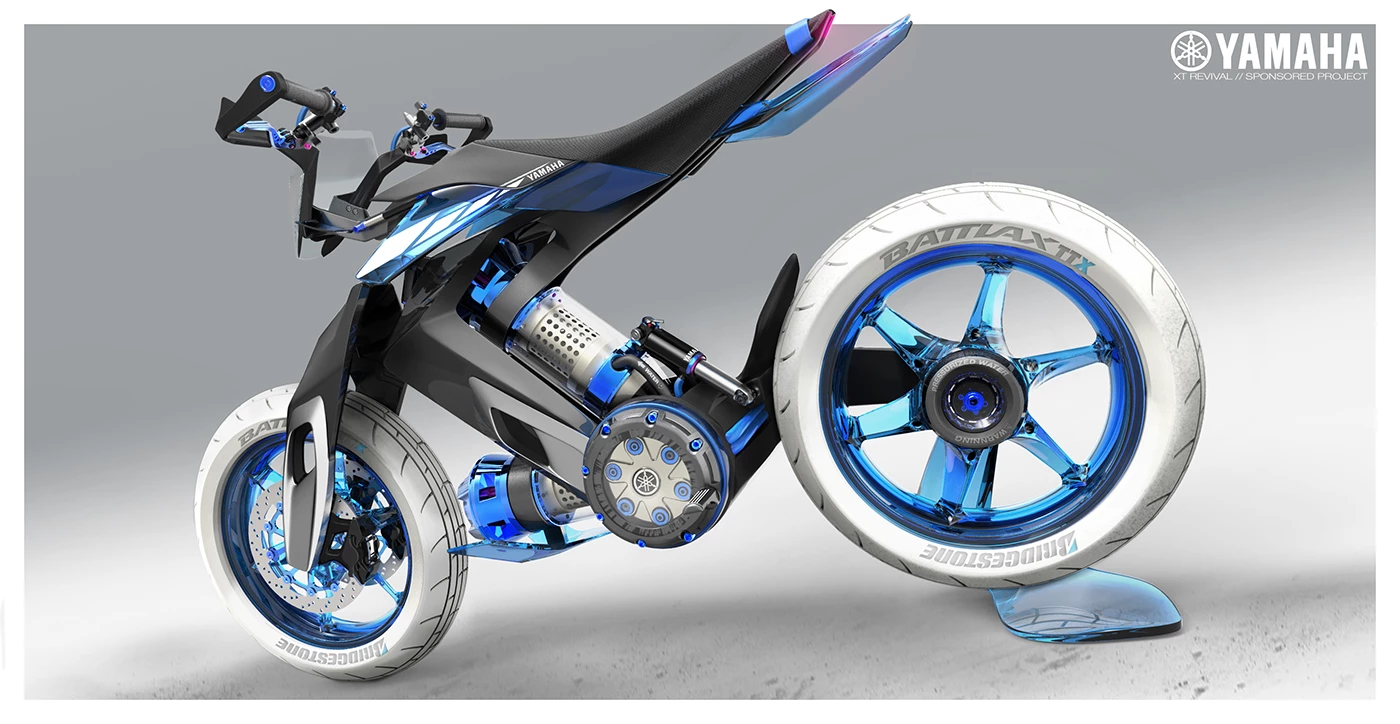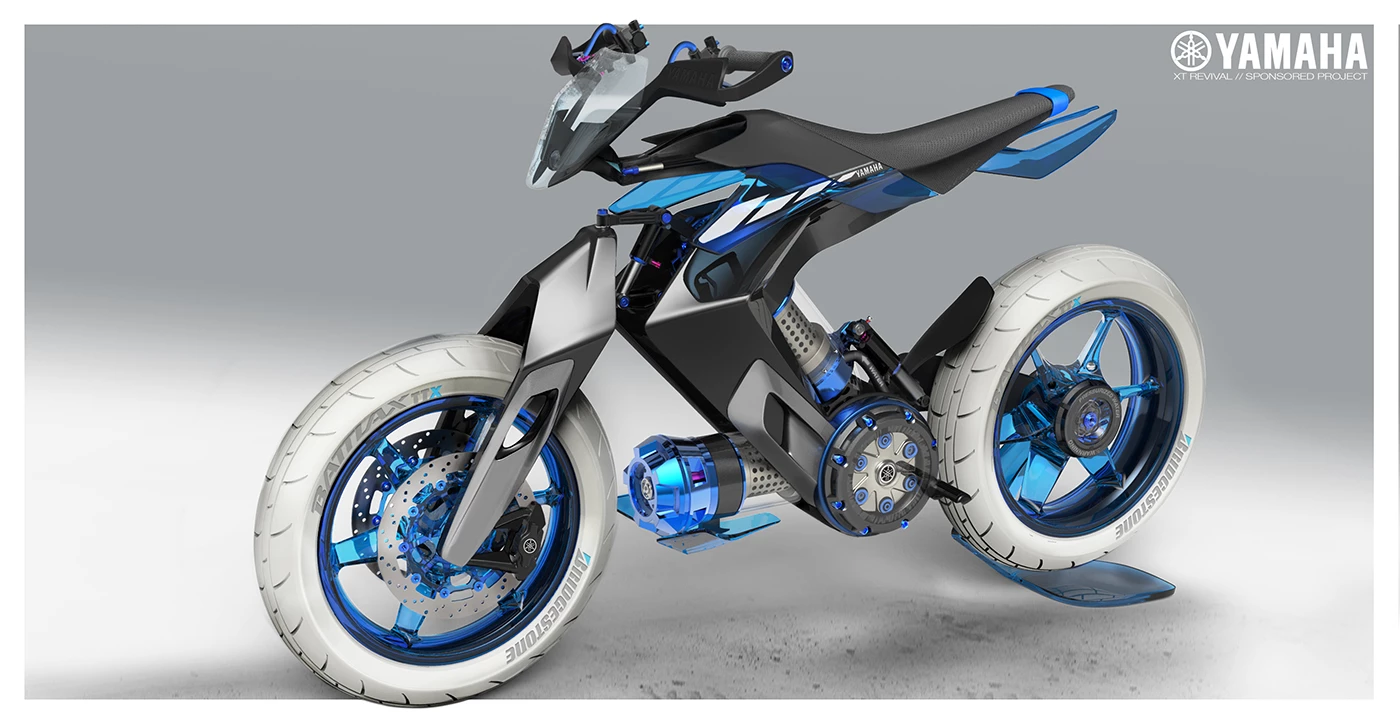We came across a piece today over at Motorbike Writer about Yamaha preparing a water-powered motorcycle, and while a quick Google revealed this to be nothing more than a Yamaha-sponsored thesis project from 2016, the idea itself is fascinating enough to follow down the rabbit hole.
Water-powered or water-engined are the wrong terms for this. What's being proposed is a system that replaces the chain, belt or shaft drive to the rear wheel with a hydraulic system that uses water pressure to spin the back wheel. So a fluid drive is probably the better way to put it. Designer Maxime Lefebvre admits as much in the "engine breakdown" slide, saying "to be effective, it needs a water pump."
That water pump would be the engine. But how realistic is it to think about a water drive system? And what would be the pros and cos of such a thing? Perhaps we can look to two previous New Atlas stories for answers.

The first would be our feature on the Ferox Azaris from 2018. This jaw-dropping Western-Australian six-wheel-drive off-road buggy was designed as a tech demonstrator to showcase Ferox's remarkable in-wheel fluid drive system. Ferox claims it operates at a volumetric efficiency of 98%, meaning that the wheel drives can deliver torque with immediate response when pressure is put into the system by any kind of motor.
Such a drive system offers extraordinary flexibility in where you put your driven wheels, as the Azaris demonstrates. And since the fluid hub drives weigh somewhere around a third of what a comparable electric hub motor does, they might not make themselves too unwelcome on the end of a swingarm.
Indeed, as Ian Drysdale's extraordinary 2x2x2 motorcycle demonstrates, fluid drives can just as easily spin your front wheel as your rear, opening up the potential for 2WD motorcycles. Yamaha, obviously, has tried this before with the groundbreaking 2-Trac dirtbike, as well as some pretty wacky shape-shifting concepts back in the early 2000s.

So the ability to drive both wheels could be one advantage. The ability to delete the greasy, consumable complexity of a chain drive could be another, and the ability to operate with a centrally-mounted electric motor or a more complex combustion one is another.
Disadvantages? Well, traditional hydraulic drives are known for being a bit jerky and leaky, and while there are other water-powered drives, we're unaware of them ever being used in a high-speed application like the back wheel of a motorcycle, where friction could build up with rpm to sap power and create heat.
Indeed, since the launch of the Azaris concept, Ferox itself seems to have gone pretty quiet. This design concept, fun though it is, looks certain to remain a piece of fun and thought-provoking fiction.
Sources: Maxime Lefebvre's Behance via Motorbike Writer









